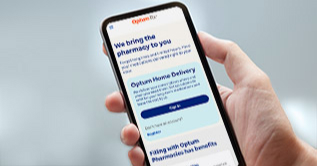Acute vs. chronic pain: What’s the difference?
Acute pain
- Sudden, often linked to a specific injury or illness
- Short-term, typically lasts less than 3 to 6 months
- Usually has a clear cause (surgery, broken bone, infection)
- Can cause sharp, localized, throbbing or stabbing sensations
- Acts as a warning signal to protect the body and promote healing
- Treatment focuses on resolving the underlying issue and may include rest, medications, physical therapy or minor procedures
- Usually resolves once the cause is treated or healed
Chronic pain
- Gradual or persistent, may continue even after injury has healed
- Long-term, typically lasts 3 to 6 months or sometimes indefinitely
- Can result from arthritis, nerve damage, fibromyalgia or other condition, or unknown causes
- Symptoms include aching, burning, stiffness or shooting pain
- Impacts sleep, mood, mobility and mental health
- Requires a mix of medications, physical therapy, psychological support and lifestyle changes
- Often managed continously rather than cured
Pain management FAQ
Chronic pain is a long-lasting condition that can persist for months or even years, affecting any part of the body. It interferes with daily life and can lead to depression and anxiety.
The first step in chronic pain management is to find and treat the cause. When that isn’t possible, the most effective approach is a combination of medications, therapies and lifestyle changes.
Pain management doctors are specialists who focus on diagnosing and treating various types of pain — especially chronic pain that lasts beyond the normal healing time. Their role includes:
- Coordinating care with physical therapists, psychologists and other specialists.
- Creating personalized treatment plans to reduce pain and improve daily function and quality of life.
- Identifying the source of pain through exams, imaging and patient history.
- Performing procedures like nerve blocks, steroid injections and spinal cord stimulation.
- Prescribing medications such as non-opioid pain relievers, nerve pain treatments and — when appropriate — opioids.
- Recommending lifestyle and alternative therapies including exercise, mindfulness and acupuncture.
Chronic pain syndrome (CPS) is a complex condition that includes chronic pain along with psychological and emotional factors like depression, anxiety, sleep disturbances, fatigue, irritability and social withdrawal.
CPS often develops when persistent pain begins to interfere with daily life, relationships and mental health, creating a cycle where emotional distress intensifies the physical pain.
At your first pain management appointment, the goal is to get a complete understanding of your pain and begin building a personalized treatment plan.
- You’ll start by filling out paperwork that covers your medical history, current symptoms, previous treatments and how pain affects your daily life.
- The pain specialist will then meet with you to discuss the nature of your pain — where it’s located, how long you’ve had it, what makes it better or worse and how it impacts your physical and emotional well-being.
- A physical examination may follow, where the doctor assesses your mobility, sensitivity and pain response.
- Depending on your condition, they might order diagnostic tests such as X-rays, MRIs or blood work to help pinpoint the cause of your pain.
- After gathering all this information, the provider will explain potential treatment options, which could include medications, physical therapy, interventional procedures like injections or nerve blocks, and complementary therapies such as acupuncture or psychological support.
- The appointment typically ends with a discussion of next steps, including referrals to other specialists if needed and the development of a customized pain management plan.
The aim is to help you manage your pain effectively and improve your quality of life.
There are several methods that can help relieve pain without the use of medications, including:
Alternative therapies
- Acupuncture: Stimulates nerves and may help reduce chronic pain symptoms.
- Self-hypnosis: Redirects attention and alters pain perception.
Mind-body techniques
- Biofeedback: Teaches control over physiological functions like heart rate and muscle tension to reduce pain.
- Deep breathing and guided imagery: Promotes relaxation and shifts focus away from pain.
- Meditation and mindfulness: Helps calm the nervous system and reduce pain perception.
Movement-based therapies
- Exercise: Regular low-impact activities like walking or swimming can interrupt the pain cycle and boost mood.
- Physical therapy: Improves strength, flexibility and mobility to ease pain.
- Yoga and tai chi: Combines gentle movement with breathwork and meditation to reduce pain and improve function.
Sensory and relaxation therapies
- Heat and cold therapy: Reduces inflammation and soothes sore areas.
- Massage therapy: Eases muscle tension and promotes circulation.
- Music therapy: Can distract from pain and improve mood, especially during recovery.
- Anticonvulsants: Used for nerve pain
- Antidepressants: Sometimes used for chronic pain management
- Non-opioid analgesics: Over-the-counter medications like acetaminophen
- Non-steroidal anti-inflammatory drugs (NSAIDs): Commonly used for mild to moderate pain and inflammation
- Opioid analgesics: Strong painkillers used for severe pain
Interventional pain management means diagnosing and treating pain through minimally invasive procedures.
Unlike general pain management, which may rely on medications, physical therapy or psychological support, interventional approaches directly target the source of pain using techniques such as:
- Epidural steroid injections
- Intrathecal drug delivery systems
- Nerve blocks
- Radiofrequency ablation
- Spinal cord stimulators
These procedures aim to interrupt pain signals or reduce inflammation, providing longer-term relief for patients suffering from chronic pain conditions.
Helping your family understand your chronic pain involves communication, education and empathy. Chronic pain is often invisible and unpredictable, so it’s important to explain that it’s not just about physical discomfort — it can affect sleep, mood, energy and daily functioning.
Sharing how pain fluctuates and using relatable language can help make your experience more understandable. Encourage your family to learn about chronic pain through articles, videos or even attending medical appointments with you.
Let them know that emotional support and validation are just as important as physical help, and that listening without trying to “fix” things can make a big difference.
Making your pain measurable by using a pain scale and describing how it impacts your life can also help them grasp its seriousness. In the end, involving them in your care and being honest about your needs can bring about deeper understanding and compassion.
Helpful resources

Article
Understand lower back pain and its treatment
Lower back pain is very common. But many people don't know that focusing on movement, stretching and reducing stress may help relieve it.

Article
How to get a good night’s rest with arthritis
Arthritis joint pain can make it hard to sleep well. Here are some practical tips to help you get more rest and feel better.

Article
A surprising way to ease chronic pain
A new study points to a unique mindfulness therapy as a promising coping strategy for people living with chronic pain.
*Pain management services vary by location. Check with your doctor’s office or health plan for specific information.
Optum arranges for or provides medical and other clinical services in accordance with laws in each state it operates. Physicians or providers referenced on this website are to those who are either part of independent practices or to those medical practices managed by or owned, where permitted, by Optum. In all circumstances, physicians and other licensed professionals have complete authority for all medical decision-making and patient care. Optum does not determine or set the methods, standards, or conduct of the practice of medicine or health care provided by any of the practices or their physicians or other licensed professionals.




